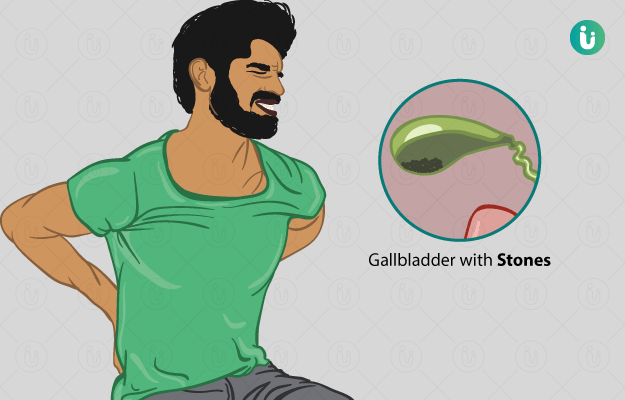What are Gallbladder Stones?
The gallbladder is present on the right side of the abdominal cavity and has an appearance of a pear. Gallstones or cholelithiasis are hardened stone-like deposits of calcium and other salts inside the gallbladder.
The deposits can obstruct gall bladder ducts, causing pain and other symptoms. Occasionally, you may not realise you have stones in your gallbladder until the symptoms manifest.
What are the main signs and symptoms?
In many cases, gallstones are asymptomatic. They may remain silent in the gallbladder for a long time. However, symptoms appear once the stones obstruct a duct. These include
- Excruciating pain radiating to the upper abdomen as well as the shoulder
- Nausea and vomiting
- Abdominal cramps
There are two types of stones:
- Cholesterol stones
- Pigment stones
What are the main causes?
- Excessive cholesterol in the bile can cause cholesterol stones. If bile contains excessive cholesterol, it remains undissolved and hardens to form stones.
- The bile contains a pigment called bilirubin. In some disorders of the liver or in blood cell diseases, excessive bilirubin is formed, leading to the formation of pigment stones.
- If the gallbladder is not functioning correctly, its contents do not get emptied and accumulate to form stones.
- Some risk factors include diabetes, hormonal imbalances, obesity, and oral contraceptives.
How is it diagnosed and treated?
The physician will assess your symptoms and then advise a CT scan or an ultrasound to look for stones. Diagnosis includes a liver function test to check the health of the liver and gallbladder. A bile duct obstruction is checked using a special dye flowing through the duct and visualized under an X-ray. Blood investigations also help check for any associated complications and infections.
If a patient with gallstones is asymptomatic, no treatment is required. The removal of the gallbladder through surgery is the most preferred way to tackle gallstones that have a tendency to recur. The absence of the gallbladder after removal does not affect any physiological functions of the body. Rarely, medicines are used to dissolve the stones. However, these are not as effective as the surgical approach, and the recurrence rate is high.

 Doctors for Gallbladder Stones
Doctors for Gallbladder Stones  OTC Medicines for Gallbladder Stones
OTC Medicines for Gallbladder Stones
 Gallbladder Stones articles
Gallbladder Stones articles

 Homeopathic Treatment of Gallbladder Stones
Homeopathic Treatment of Gallbladder Stones







 Dr. Rachita Narsaria
Dr. Rachita Narsaria











